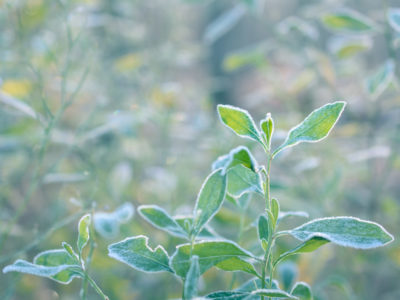How do we begin to live in greater harmony with the Earth?
We can buy things that are less toxic, recycle our cardboard boxes, and refuse single use plastics, but those are surface activities. Important, yes, but they just help us do less damage. Beyond that is the deeper work of repairing our relationship with the natural world and learning to live from the understanding that we have one.
Living a few minutes outside of Washington, D.C., I often feel more attuned to traffic cycles and the Starbuck’s down the street than seasonal shifts and weather patterns.
It is easier though to acknowledge a sense of community with the elements when they offer sunshine and 75 degrees with a slight breeze. So how do we find that same sense of co-existence when conditions are challenging?
This week a polar vortex is delivering below freezing temperatures to a large part of the U.S., and for this I share a Native American perspective…
Luther Standing Bear wrote a series of books detailing his life in the Lakota (aka Sioux) Indian tribe. He was the son of a chief and one of the few native writers whose life spanned the time before and after his tribe was moved to a reservation. He was educated by his people on the prairie and then by the white Carlisle School in Pennsylvania.
In his book, Land of the Spotted Eagle, he conveys a profound sense of living in communion with the natural world that is worthy of long consideration. There was one aspect of his daily experience though that struck me as highly practical and easy to put into use — stop complaining about so-called bad weather…
“The hottest summer sun on a bare head brought no complaint from a Lakota, for weather in any form was never a topic of conversation. Such complaints as, ‘It is too hot today,’ or ‘It is not warm enough,’ were never heard. To complain against the weather would be denying the praise offered to the Great Mystery each morning for the day and all it held.”
This is particularly powerful because the Lakota lived on the open plains of North and South Dakota. They enjoyed the beauty of boundless landscapes and skies but also dealt with extreme weather conditions — sub-zero temperatures in the winter, scorching sun in the summer, wind storms, thunderstorms, driving rain — while living in teepees. And they managed to maintain a sense of respect for all of it.
The Lakota didn’t just refrain from complaining about the weather, they paid attention to it, prepared for it, and held the internal attitude that whatever came had a larger purpose and helped them in some way…
“Not only did the Lakota like the air, but the wind as well. It was considered a friendly force and a carrier of messages. In the world of the Lakota nothing could be useless nor futile, so the whirlwinds filled their mission by hurrying here and there with messages… Sometimes the wind came and sent the dust from the buffalo wallows circling high in the air and clouding the sky when otherwise the air would have been clear, for grass covered most of the ground. But when the dust blew, the Lakotas said the air was being cleaned for them, for when the wind subsided the days seemed brighter and clearer.”
And finally, they felt the forces of nature were something to emulate and develop a relationship with…
“Nature dealt vigorously with the Lakota and they with bodies almost bare became vigorous. What the body was fitted for also, and physical hardihood was matched with spiritual hardihood. There was little fear within. The mental reaction of the Lakota was one of unity with these tremendous forces, and rather than terror many times the attitude was a welcoming defiance. I have seen a brave, without uttering a word, strip himself to breechclout and walk out into a rain falling so heavily in sheets that a few paces from the door his form was lost to sight. He went out to be alone with Rain. That is true love of Nature.”
Luther Standing Bear didn’t share how frigid temperatures are helpful or what messages arctic air carries, but perhaps it’s enough to keep an open mind and trust that it’s all serving some good purpose.
P.S. If this perspective interests you, I highly recommend Land of the Spotted Eagle. I’ve also read My Indian Boyhood and My People the Sioux by this author. They’re both good, but Spotted Eagle is the best.

 13 Clean(er) Beauty Products
13 Clean(er) Beauty Products